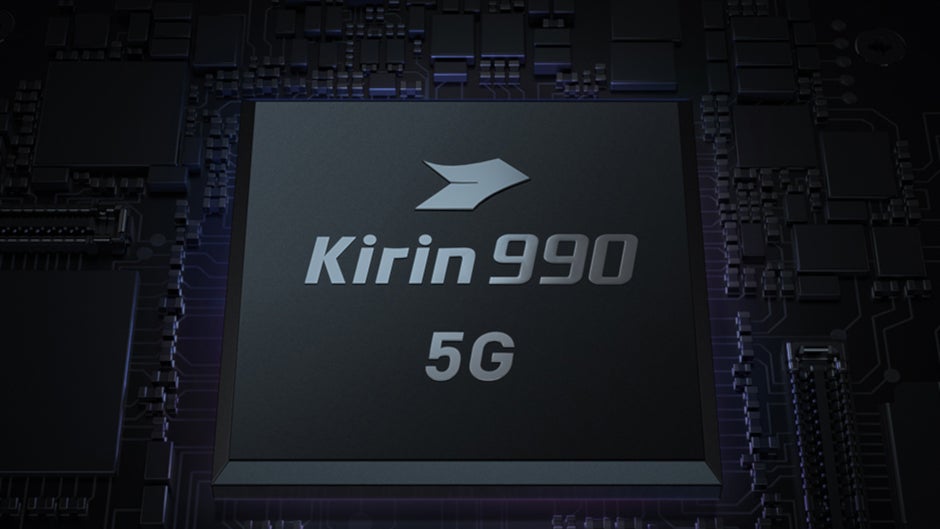Huawei to debut 5nm Kirin 1000 SoC in next year's Mate 40 line

Earlier this month, Huawei unveiled its latest chipset, the Kirin 990. The chip is designed by the Chinese manufacturer HiSilicon unit and manufactured by Taiwan Semiconductor Manufacturing Company (TSMC) using its 7nm process (more on that later). It also has a built-in 5G modem and powers the Mate 30 line; it also will be used in the foldable Mate X which is due out next month. While the Kirin 990 is certainly a state-of-the-art SoC, Huawei is already looking ahead toward next year's Mate 40 line. In a new report, Huawei Central cites sources who have passed along details about the company's next chipset, the Kirin 1000.
According to these sources, the Kirin 1000 will be manufactured by TSMC using its 5nm process. The process numbers are related to the number of transistors that can be found inside an integrated circuit. The lower the process figure, the higher the number of transistors inside the chip. The more transistors inside, the more powerful and energy-efficient these components are. Having made the move from 10nm to 7nm, we are about to embark on the 5nm era starting next year. Both TSMC and Samsung have roadmaps taking production to the 3nm process starting as soon as 2022. Consider that the 5G version of the 7nm Kirin 990 is stuffed with 10.3 billion transistors. If the Kirin 1000 is produced using the 5nm process, it could have as many as 171.3 million transistors per square millimeter.
Kirin 1000 SoC will feature the ARM Cortex-A77 CPU core
While U.K. based ARM holdings supposedly cut all ties with Huawei due to the latter's U.S. supply chain ban (ARM uses some American technology for its chip designs), the two are still working together because of a licensing agreement signed before the ban went into effect. As a result, the Kirin 1000 will probably employ ARM's most powerful CPU at the moment, the Cortex-A77. The Kirin 990 SoC could have used the A-77 CPU, but the company decided to trade some power for extra battery life and used the A-76 instead. Huawei consumer group chief Richard Yu did say that its 5nm chip would use the A-77. Even though ARM says that the latter CPU core offers a 20% performance boost with no extra power consumption, Huawei says that its own testing contradicts this claim.

The sequel to the 7nm Kirin 990 SoC will be the 5nm Kirin 1000 chipset
The Mate 30 series, unveiled less than two weeks ago, has been seriously handicapped outside of China. That's because of the company's inclusion on the U.S. Commerce Department's Entity List, which prevents it from buying components and software from the states. As a result, the phone runs the AOSP open-source version of Android without the Google Play Store and other core Google apps like Maps, Search, YouTube and Gmail. But that shouldn't deter sales in China and Yu said this past weekend that pre-orders for the Mate 30 line are six times the number Huawei received for the P30 series. The executive added that the Mate 30 and Mate 30 Pro are already in short supply. After three hours, one million units were pre-ordered and Huawei expected to ship 20 million units of its new flagship phone.
Overall, Huawei hoped to deliver 300 million handsets this year which would have probably made it the largest smartphone manufacturer in the world. But international sales of the Mate 30 series could suffer from the lack of Google apps on the phones. Earlier this year, after being banned from its U.S. suppliers, Huawei admitted that it won't surpass Samsung this year. During the first half of 2019, Huawei shipped 118 million phones.
Follow us on Google News










![A new Android bug is making it impossible to install new apps. Are you affected? [UPDATE]](https://m-cdn.phonearena.com/images/article/176703-wide-two_350/A-new-Android-bug-is-making-it-impossible-to-install-new-apps.-Are-you-affected-UPDATE.webp)

Things that are NOT allowed:
To help keep our community safe and free from spam, we apply temporary limits to newly created accounts: